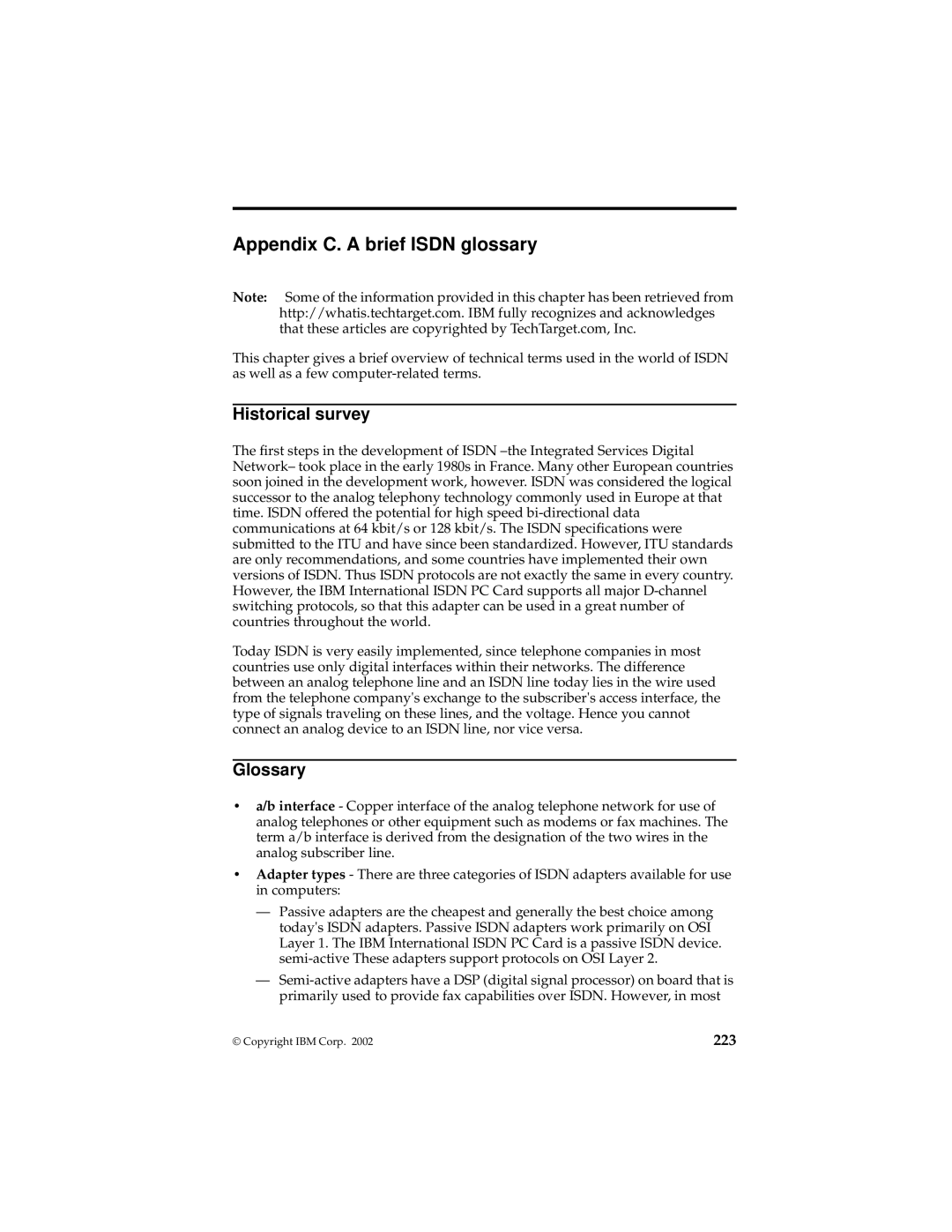
Appendix C. A brief ISDN glossary
Note: Some of the information provided in this chapter has been retrieved from http://whatis.techtarget.com. IBM fully recognizes and acknowledges that these articles are copyrighted by TechTarget.com, Inc.
This chapter gives a brief overview of technical terms used in the world of ISDN as well as a few
Historical survey
The first steps in the development of ISDN
Today ISDN is very easily implemented, since telephone companies in most countries use only digital interfaces within their networks. The difference between an analog telephone line and an ISDN line today lies in the wire used from the telephone company's exchange to the subscriber's access interface, the type of signals traveling on these lines, and the voltage. Hence you cannot connect an analog device to an ISDN line, nor vice versa.
Glossary
•a/b interface - Copper interface of the analog telephone network for use of analog telephones or other equipment such as modems or fax machines. The term a/b interface is derived from the designation of the two wires in the analog subscriber line.
•Adapter types - There are three categories of ISDN adapters available for use in computers:
—Passive adapters are the cheapest and generally the best choice among today's ISDN adapters. Passive ISDN adapters work primarily on OSI Layer 1. The IBM International ISDN PC Card is a passive ISDN device.
—
© Copyright IBM Corp. 2002 | 223 |
